In Japan, food fads come and go. They can be as fleeting as the cherry blossom petals that bloom and fall to the ground just days later. The latest is a stuffed, roasted seaweed and rice sandwich called onigirazu. It is actually an old fad enjoying a comeback.
Onigirazu is a creative take on the traditional rice ball (called onigiri or omusubi), a standard snack, lunch, or picnic item. To make onigiri, rice is molded with hands wet and salted, into a compact ball or triangle with small bits of pickled plum (umeboshi), seasoned salmon, or dried bonito flakes (katsuobushi) in the center, like a buried treasure. A belt of roasted seaweed hugs the outside of the rice balls. It takes practice and some skill to make and is the food that reminds most Japanese of their moms.
For onigiri to turn into onigirazu, a square of seaweed is layered with warm rice and unconventional fillings like ham, cheese with egg,
The seaweed is folded around the layers and wrapped in plastic wrap for five minutes so the warm rice and seaweed have time to adhere.
Then the stack is cut in half like a sandwich.
Some of the combos may sound like strange bedfellows, but they are quite tasty and are a great way to use up all the bits in the refrigerator.
The origin of onigirazu can be traced to a popular mid-1980s food manga called “Cooking Papa.” “The series was about a dad in a family, a ‘salaryman’ who liked to cook,” says Lorie Brau, associate professor of Japanese language and culture at the University of New Mexico, who studies food manga.
The recipe recently made a comeback on Cookpad.com, the most popular Japanese recipe-sharing site, which also has an English language version. “All of a sudden it became a popular search word, and now there are hundreds of recipes for onigirazu on the site,” says Brau. According to Brau, onigirazu, means “not to compress or mold,” which makes this anything-goes rice pillow simple to assemble. Onigirazu should be here to stay.
RECIPE
Ham, egg and cheese onigirazu
Makes about 5 “sandwiches”
Japanese recipes often require precision; this one does not. For onigirazu, the rice is layered with other foods, often in a slap-dash fashion. Begin with a sheet of roasted seaweed (the kind used for making sushi rolls). The rice begins with short-or medium-grain white Japonica rice. Use it warm, so it cradles the fillings on the bottom and top. After closing up the seaweed like an envelope, wrap the sandwiches individually in plastic wrap. Most Japanese households have rice cookers going daily so hot rice is usually available. If you have a rice cooker, follow the directions and use the measuring cup that comes with it. Do not skip the step for soaking the rice. Using leftover rice is fine; you’ll need to reheat it in a microwave before making the sandwiches. Each sandwich uses ⅔ cup cooked rice. (If you use a rice cooker, use 2 rice-cooker cups of rice with water up to the 2-cup line.)
RICE
| 1½ | cups short- or medium-grain Japonica rice |
| 1½ | cups + 2 tablespoons water |
1. Place rice in a heavy-bottomed pot. With water running, rinse the rice by stirring with your hand. Drain the water as it becomes cloudy. Repeat this process about 5 times until the water runs clear.
2. When all water has been poured off, add measured 1½ cups plus 2 tablespoons of water to pot. Set aside to soak for 20 minutes.
3. Cover the pan with a lid and set on medium heat. Bring to a boil. Set the lid slightly askew and reduce the heat. Simmer the rice for 10 minutes.
4. Turn off the heat and let the rice sit for 10 minutes.
FILLING
| 5 | tablespoons mayonnaise |
| 1 | tablespoon wasabi paste, or to taste |
| 2 | teaspoons oil |
| 5 | eggs |
| ¼ | cup chopped fresh chives or scallions |
| 5 | sheets roasted seaweed |
| 3½ | cups cooked rice |
| 5 | slices baked ham, cut in half |
| 5 | slices Havarti, Muenster, or American cheese |
1. Have on hand a roll of plastic wrap and an 8-inch skillet.
2. In a bowl mix together the mayonnaise and wasabi.
3. In another bowl beat the eggs. In the skillet over medium heat, heat the oil. Add the eggs and spread them around the pan. Sprinkle with the chives, if using, and cook until the eggs are just set. With a spatula, turn the omelet over and cook 1 minute. Turn out onto a plate. Cut into 5 wedges.
4. Tear off a 12-inch piece of plastic wrap and lay it on the work surface. Lay 1 sheet of seaweed, on the diagonal, rough side up, in the center of the wrap. Set ⅓ cup of warm rice in the center of the seaweed. With a spatula or back of a spoon lightly spread into a 5-inch square or circle. Spread ½ tablespoon of the mayonnaise mixture over the rice. Set ½ slice of ham on the rice. Cut an omelet wedge into 2 pieces and lay the pieces on the ham so they fit evenly. Place the cheese on the egg and finish with the remaining ½ ham slice. Spread the remaining mayonnaise mixture on the ham. Spread another ⅓ cup of rice over the ham.
5. Starting from one bottom corner of seaweed, bring it up and over the layers and hold with your finger. Take the next corner of the seaweed and fold it so that it overlaps slightly with the first corner. Continue folding over the seaweed until all the layers are wrapped in it. Wrap tightly in plastic wrap. Set aside for 5 minutes. Use the remaining rice and filling ingredients to make 4 more sandwiches.
6. Either keep the plastic on or remove and with a large knife, slice the sandwiches in half.

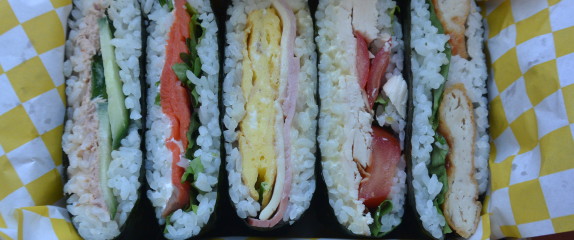
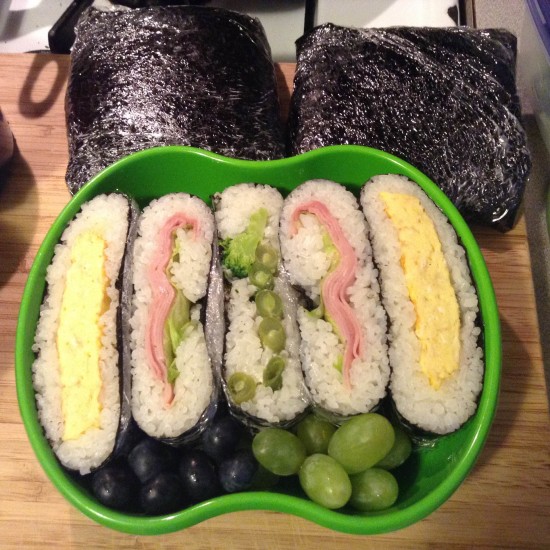
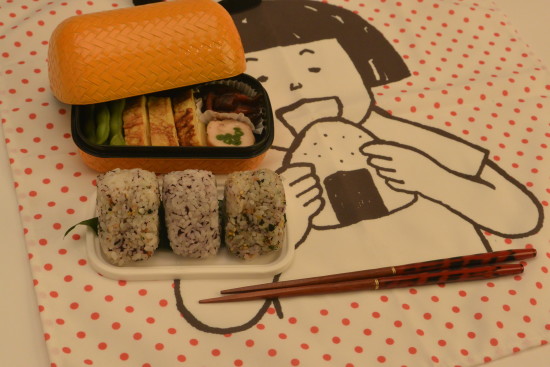
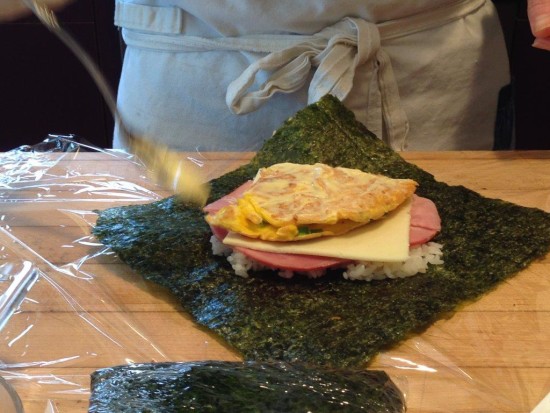
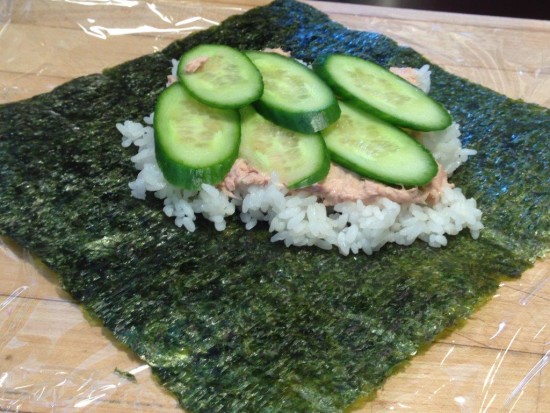
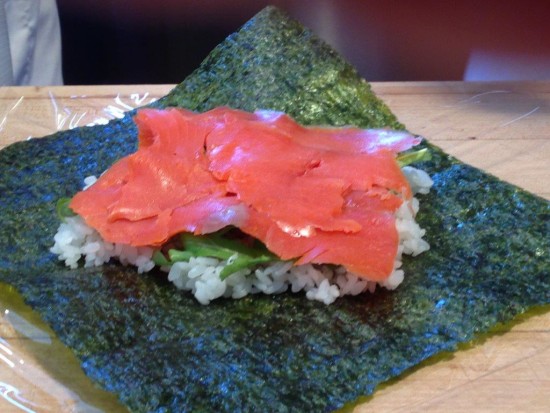
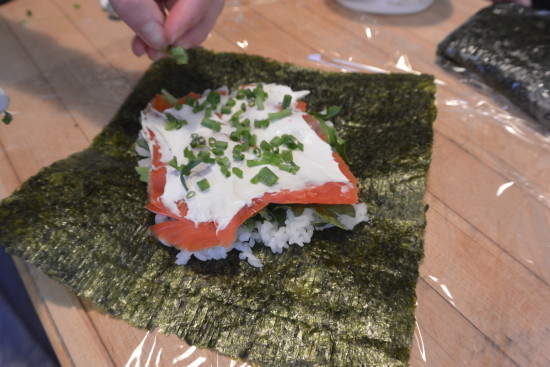
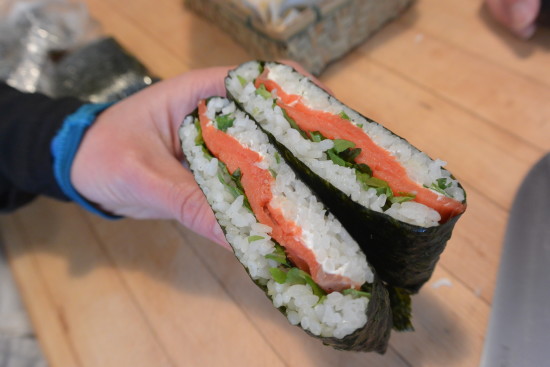
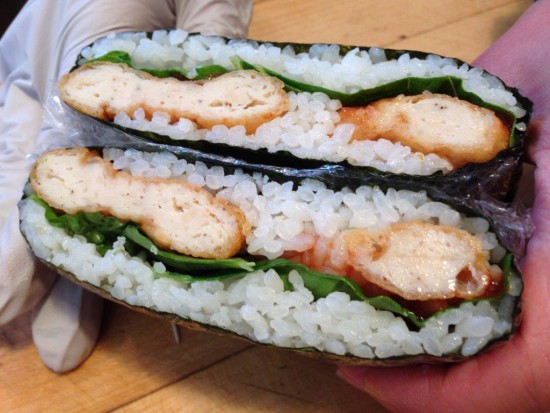
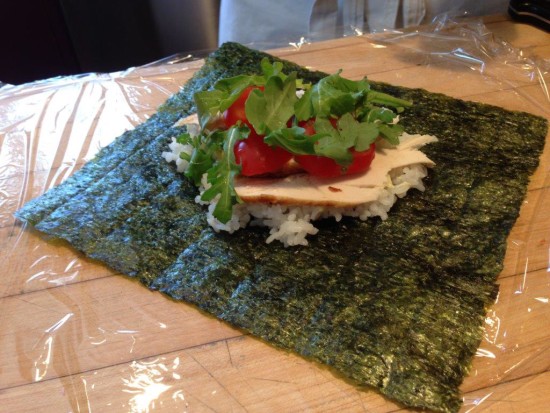
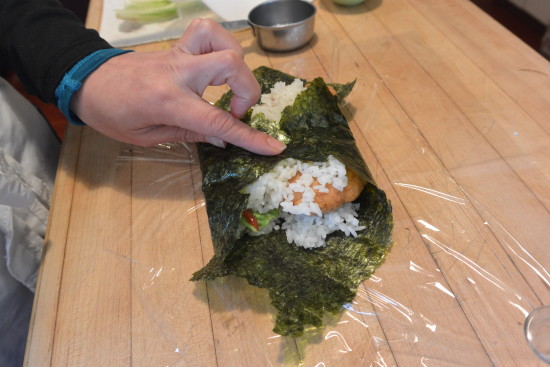
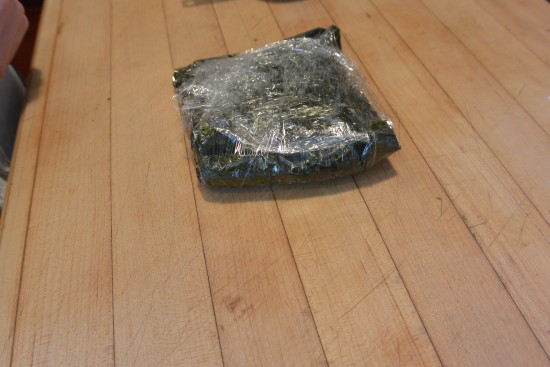
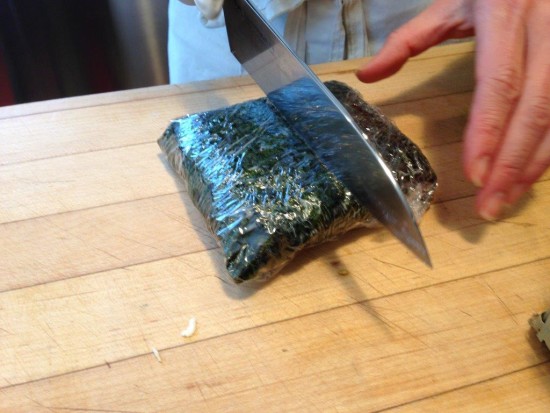
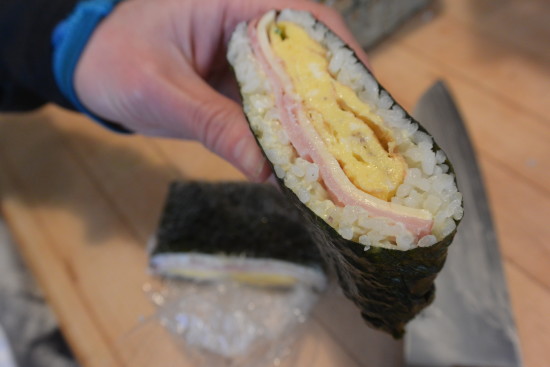
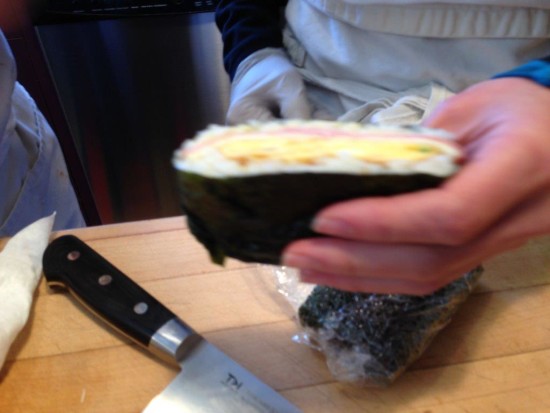










 Debra Samuels, bestselling author, food writer and cooking instructor,
Debra Samuels, bestselling author, food writer and cooking instructor,